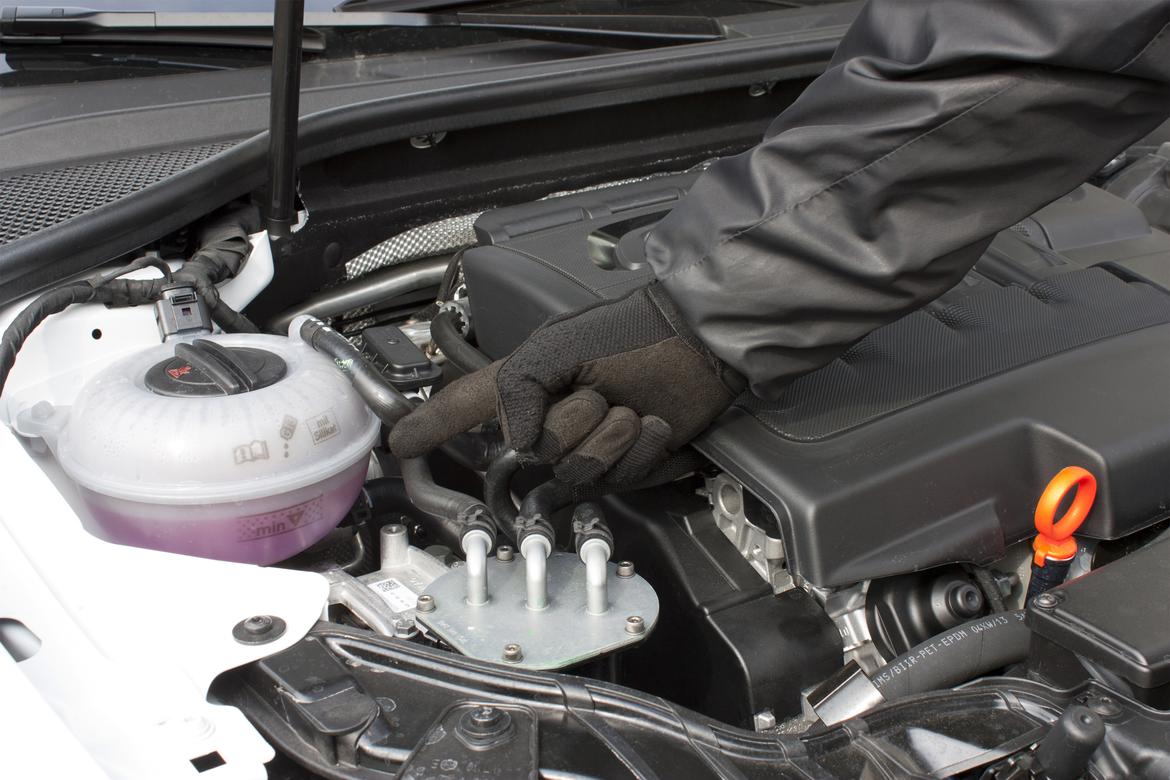
When the temperature gauge on your dashboard reads high or a temperature warning light comes on, you have a cooling system problem that may be caused by a leak — be it in the radiator itself or some other component.
First, make sure it's coolant that's leaking, not another fluid. (Coolant is often referred to as antifreeze, but technically coolant is a 50/50 mix of antifreeze and water.) You can easily check the coolant level in your see-through overflow tank. If it's empty or low, the next step should be to check the coolant level in the radiator, but that should be done only when the engine is cool.
Once you know you're losing coolant, the radiator is a good place to start. Some radiator leaks will be easy to spot — such as a puddle underneath the radiator — but others not so much. It's best to check the radiator from every angle, not just from above, and pay particular attention to seams and the bottom. Corrosion inside the radiator or holes from road debris also can cause leaks.
Antifreeze comes in different colors — green, yellow and pinkish-red, for example — feels like slimy water and usually has a sweet smell. If you can't see coolant dripping or seeping, look for rust, tracks or stains on the radiator. Those are telltale signs of where it has leaked.
If the radiator appears to be OK, the cooling system offers several possibilities for leaks, including the hoses from the radiator to the engine, the radiator cap, water pump, engine block, thermostat, overflow tank, heat exchanger (a small radiator that circulates hot coolant into the dashboard for cabin heating) and others. A blown gasket between the cylinder head and engine block is another possibility, allowing coolant inside the combustion chambers — a problem that must be addressed immediately by a mechanic.
If you can't find a leak, have it checked by a professional. Coolant has a way of escaping only under pressure when the car is running — possibly in the form of steam, which may not leave a trace.
